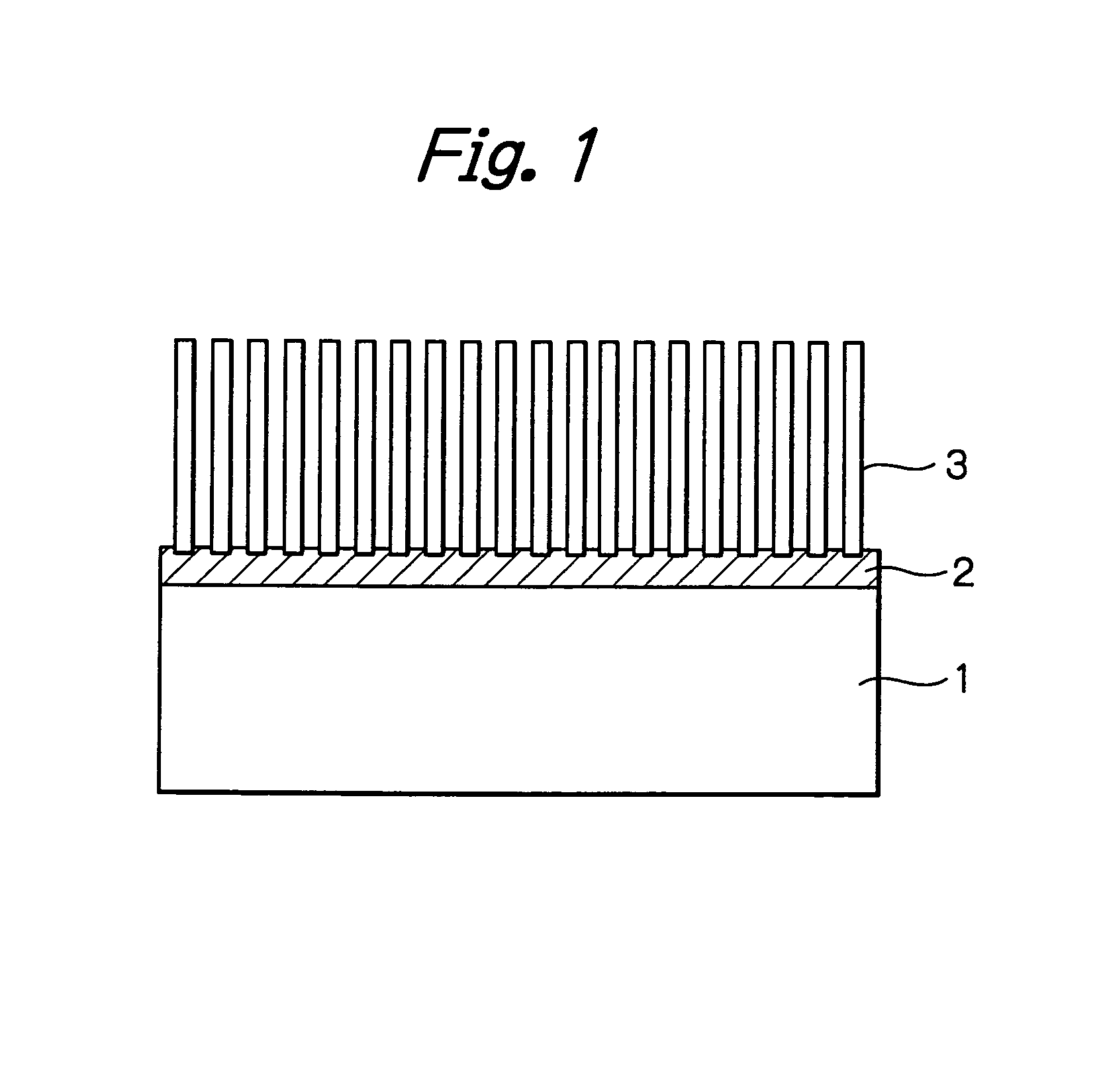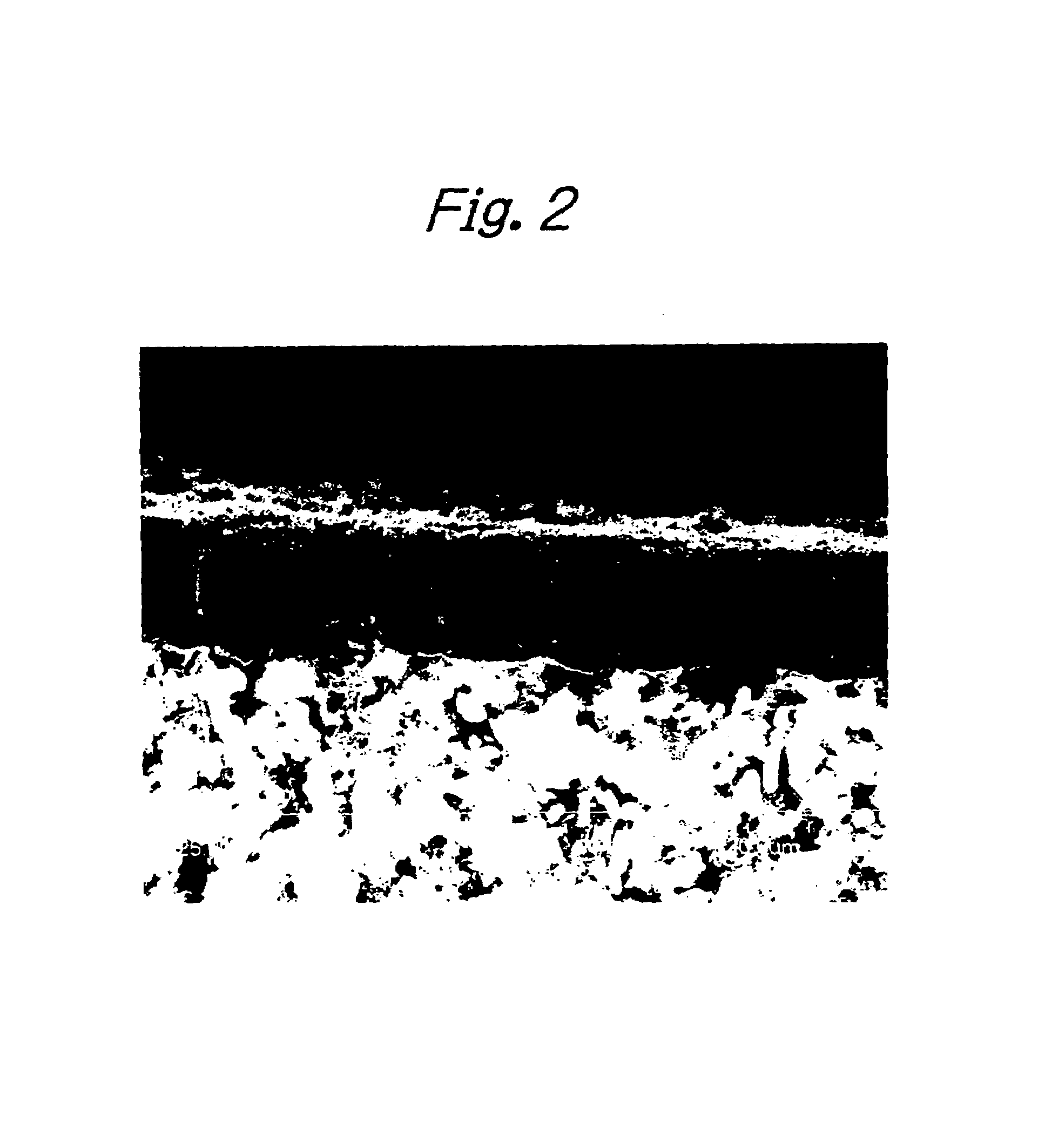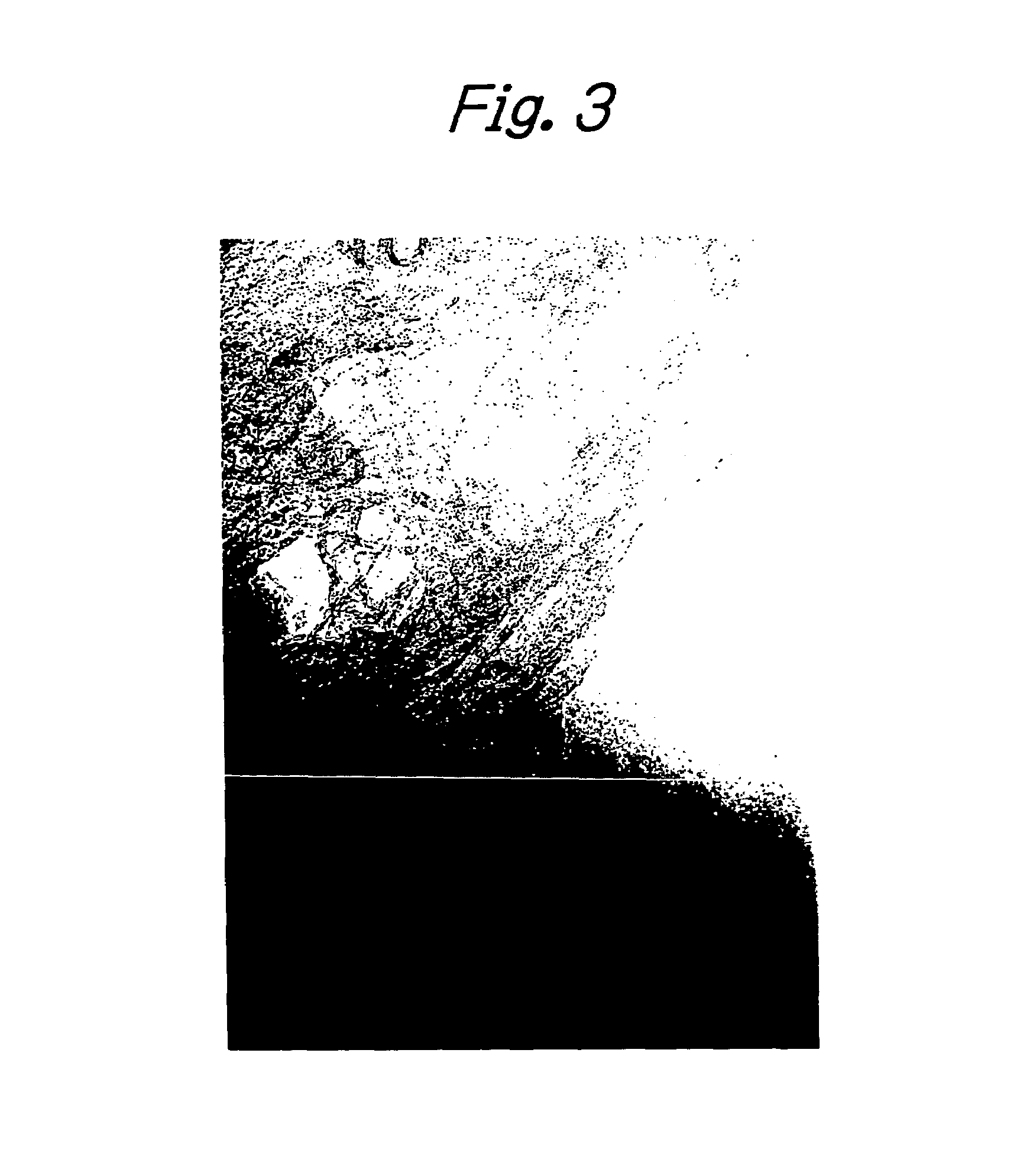Aligned carbon nanotube films and a process for producing them
- Summary
- Abstract
- Description
- Claims
- Application Information
AI Technical Summary
Benefits of technology
Problems solved by technology
Method used
Image
Examples
example 1
[0054]A square silica-alumina sheet that consisted of 25% silica and 75% alumina and which measured 2 mm thick and 30 mm on each side was chosen as a substrate. This substrate was dipped in Alumina Sol 200 of Nissan Chemical Industries, Ltd. as diluted 4-fold with ion-exchanged water. After 10 minutes' dipping, the substrate was recovered from the solution, dried in the air and burned at 700° C. for 5 hours. Measurement by the BET method showed that the alumina burned by the above procedure had an average pore size of 8.8 nm.
[0055]A catalyst fluid was prepared by adding 10 μL of 30% aqueous ammonia to 90 g of an aqueous solution of cobalt nitrate at a concentration of 0.2 mol / L. By addition of aqueous ammonia, the concentration of hydrogen ions in the solution changed from a pH of 4.5 to 7.2
[0056]The previously prepared alumina substrate was dipped in the catalyst fluid for 10 minutes. The substrate was recovered, air dried for 1 hour and burned at 400° C. for 3 hours in the air. Af...
example 2
[0058]A square silica-alumina sheet that consisted of 25% silica and 75% alumina and which measured 2 mm thick and 30 mm on each side was chosen as a substrate. This substrate was dipped in Alumina Sol 200 of Nissan Chemical Industries, Ltd. as diluted 4-fold with ion-exchanged water. After 10 minutes' dipping, the substrate was recovered from the solution, dried in the air and burned at 650° C. for 5 hours. Measurement by the BET method showed that the alumina burned by the above procedure had an average pore size of 6.7 nm.
[0059]A catalyst fluid was prepared by adding 10 μL of 30% aqueous ammonia to 90 g of an aqueous solution of cobalt nitrate at a concentration of 0.2 mol / L. By addition of aqueous ammonia, the concentration of hydrogen ions in the solution changed from a pH of 4.5 to 7.2
[0060]The previously prepared alumina substrate was dipped in the catalyst fluid for 10 minutes. The substrate was recovered, air dried for 1 hour and burned at 400° C. for 3 hours in the air. Af...
example 3
[0062]A square silica-alumina sheet that consisted of 25% silica and 75% alumina and which measured 2 mm thick and 30 mm on each side was chosen as a substrate. This substrate was dipped in Alumina Sol 200 of Nissan Chemical Industries, Ltd. as diluted 4-fold with ion-exchanged water. After 10 minutes' dipping, the substrate was recovered from the solution, dried in the air and burned at 800° C. for 5 hours. Measurement by the BET method showed that the alumina burned by the above procedure had an average pore size of 10.4 nm.
[0063]Except for the use of this substrate, preparation of a catalyst fluid, dipping of the substrate in the catalyst fluid and a reaction for producing a carbon nanotube aligned film were performed as in Example 1. After the end of the reaction, the surface of the substrate was examined with a SEM and it was confirmed that an aligned carbon nanotube film had been formed in a thickness of about 5 μm on top of the substrate. The individual carbon nanotubes had o...
PUM
 Login to View More
Login to View More Abstract
Description
Claims
Application Information
 Login to View More
Login to View More - R&D
- Intellectual Property
- Life Sciences
- Materials
- Tech Scout
- Unparalleled Data Quality
- Higher Quality Content
- 60% Fewer Hallucinations
Browse by: Latest US Patents, China's latest patents, Technical Efficacy Thesaurus, Application Domain, Technology Topic, Popular Technical Reports.
© 2025 PatSnap. All rights reserved.Legal|Privacy policy|Modern Slavery Act Transparency Statement|Sitemap|About US| Contact US: help@patsnap.com



